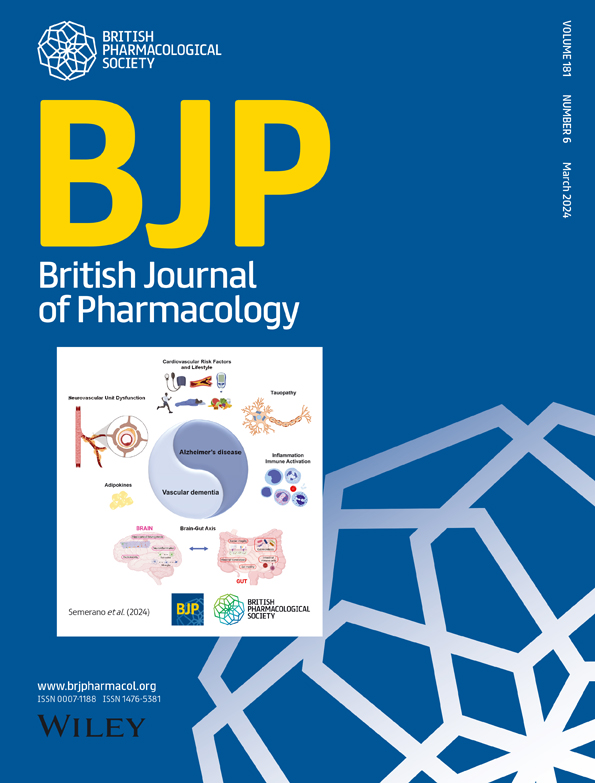猪急性心肌梗死模型中的心脏保护性微RNA(protectomiRs)以及缺血调理对心脏的保护作用:MiR-450a
IF 6.8
2区 医学
Q1 PHARMACOLOGY & PHARMACY
引用次数: 0
摘要
心脏保护性 miRNA(protectomiRs)是很有前景的治疗工具。在这里,我们的目的是在急性心肌梗死(AMI)转化猪模型中鉴定保护性 miRNA,并验证它们对心肌细胞的保护作用。本文章由计算机程序翻译,如有差异,请以英文原文为准。
Cardioprotective microRNAs (protectomiRs) in a pig model of acute myocardial infarction and cardioprotection by ischaemic conditioning: MiR-450a
Cardioprotective miRNAs (protectomiRs) are promising therapeutic tools. Here, we aimed to identify protectomiRs in a translational porcine model of acute myocardial infarction (AMI) and to validate their cardiocytoprotective effect.
求助全文
通过发布文献求助,成功后即可免费获取论文全文。
去求助
来源期刊
CiteScore
15.40
自引率
12.30%
发文量
270
审稿时长
2.0 months
期刊介绍:
The British Journal of Pharmacology (BJP) is a biomedical science journal offering comprehensive international coverage of experimental and translational pharmacology. It publishes original research, authoritative reviews, mini reviews, systematic reviews, meta-analyses, databases, letters to the Editor, and commentaries.
Review articles, databases, systematic reviews, and meta-analyses are typically commissioned, but unsolicited contributions are also considered, either as standalone papers or part of themed issues.
In addition to basic science research, BJP features translational pharmacology research, including proof-of-concept and early mechanistic studies in humans. While it generally does not publish first-in-man phase I studies or phase IIb, III, or IV studies, exceptions may be made under certain circumstances, particularly if results are combined with preclinical studies.

 求助内容:
求助内容: 应助结果提醒方式:
应助结果提醒方式:


